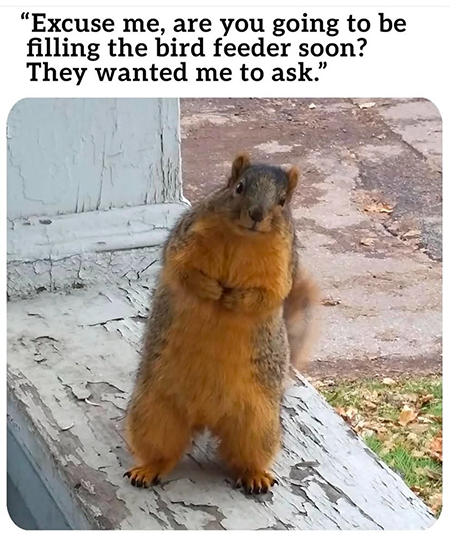Welcome back and thank you for being here today. I have a few interesting STEM links to share. The American Academy of Pediatrics has free materials to help parents work with their kids to manage screen time. And I came across a story about four Italian nuns who contributed to a star mapping project. The recent CES show in Las Vegas also surfaced an inflatable vertical farm called AirFarm. And I got to research a question about how many states of matter exist. The answer is three, four, or five depending. With two other oddball states that you could include. Enjoy!
Kids and Screen Time
The American Academy of Pediatrics published an article called the 5Cs of Media Use. The goal is to help parents map their kids age to responsible behaviors with media. For each of five age groups, there’s a download-able PDF. Materials are in English and Spanish.
Their article also links to another more detailed article on the same topic. The 5 C’s of media are the child, the content, ways to calm down, what media is crowding out and ongoing communication. Their 5 C’s guidance for each age group starts with information about the developmental stages kids are going through. And how this influences media use. It also describes healthy media habits to strive for at home. You can use these to build upon how you’re already connecting with your kids.
The second article also raises an interesting point about technology. It’s often designed for adults. Social media, in particular, was not designed with kids in mind. Especially if these companies refuse to moderate negative hurtful content on their services. With billions of users, it’s also difficult perhaps impossible to moderate content. And the people who review content as a job often suffer trauma from viewing content. There’s a lot of hate and negativity.
If you’re interested in the topic and haven’t seen these materials, definitely look them up.
The 5 Cs of Media Use
Kids & Screen Time: How to Use the 5 C’s of Media Guidance
The Future of Farming
What intrigues me about new technology is that much of it can operate at a personal level. You don’t need a vast solar panel farm to power your house. You could raise chickens out back in many towns. That used to be common last century. And Victory gardens were a thing during World War II. Put another way, technology gives us the chance to return to more sustainable ways of living. Despite all the media coverage emphasizing mass scale implementations.
We food shop twice a week most weeks, for example. For us and most people in the US, food is something you buy in grocery stores. But there’s a lot of new technology that makes it easier to grow some of your food. And beyond a few little pots of spices on a kitchen window sill. Yet it is still promoted on a mass scale, not as a personal purchase.
Probably the most interesting example is AirFarm. Created by a South Korean company, it’s a small inflatable building. It solves common problems with hydroponics, using water to feed plants indoors. The AirFarm cuts water use by up to 99%. That’s a big deal in places where water is scarce. Their product also works great for refugee camps. Anywhere where people have skills, need food, and need to conserve water. And companies like Aerofarm grow food in big cities for sale in local stores.
Smart farming is a new phrase to describe using technology to optimize farming. Instead of acres of land, you grow food in stacked rows. It’s one step beyond hydroponics which is older technology. Rethinking farming also makes sense with corporate ownership of farm lands in the US. It allows communities to have options where they get their food.
Also, from what I can tell researching online, this is mostly new technology. It’s something we’ll see evolve over the next few years. And hopefully in ways individuals and small communities can afford to use. If you’re interested to research for yourself, terms you might use are vertical farming, aeroponics, and smart farming.
Midbar AirFarm
World’s first inflatable farm uses 99% less water to grow vegetables in deserts
https://interestingengineering.com/ces-2025/inflatable-farm-uses-99-less-water
Aeroponic Engineering and Vertical Farming (Grades 9-12)
https://agclassroom.org/matrix/lesson/720
Aerofarm
This Farm of the Future Uses No Soil and 95% Less Water
The 19 Biggest Companies in Vertical Farming Today
https://www.edengreen.com/blog-collection/17-biggest-companies-in-vertical-farming
Vertical Farming with Aeroponics: Top 7 Benefits of a Tower Farm
https://youtu.be/hCQHwimJFGM
https://www.youtube.com/@Agrotonomy
Star Mapping Nuns
Sorry, I could not resist the headline. Nuns and stars are not mentioned often. But there’s a long history of women in general, and nuns at times, as scientists. Especially in the 1800s into the 1900s. They’re too often written out of history. In this case, four nuns in the early 1900s provided key help mapping stars in the night sky. Their identities were unknown until recently.
Humans have mapped star positions and movements for thousands of years. In 190 BC, a Greek named Hipparchus published a star catalog. His catalog mapped 850 stars. The next catalog appeared in 1627 with 1000 stars, published by Tycho Brahe. Brahe’s catalog had greater precision than Hipparchus’ earlier catalog. Sailors used these catalogs to navigate ships out on the open ocean. And both existed before telescopes.
In 1807 Friedrich Bessel cataloged 3000 stars using a telescope. Bessel also calculated the first distances of stars using trigonometry. In the 1890s, astronomers started a project to map stars, the Astrographic Catalogue. They used photography and recruited help from scientists around the world. Including four nuns recruited by the Vatican to help measure and map stars. From 1909 to 1929, they mapped over 481,000 stars by studying photographic plates of the night sky.
The four nuns were members of the Sisters of the Holy Child order. In 2024, they had asteroids named after them: Sister Emilia (Anna) Ponzoni, Sister Regina (Maria) Colombo, Sister Concetta (Lucia) Finardi, and Sister Luigia (Carmelita Jacinta) Panceri. The Vatican Observatory story linked below shows the paths of their asteroids. It’s a neat way to be remembered.
Four Sisters of the Holy Child Mary Get Asteroids Named After Them
These Little-Known Nuns Helped Map the Stars
https://www.smithsonianmag.com/smart-news/these-little-known-nuns-helped-map-stars-180959012
From Hipparchus to Gaia, the story of finding our place among billions of stars
https://jatan.space/from-hipparchus-to-gaia
The Hipparcos Space Astrometry Mission
https://www.cosmos.esa.int/web/hipparcos
Astrometry
https://en.wikipedia.org/wiki/Astrometry
The only way to learn a new programming language is by writing programs in it. — Dennis Ritchie.
Let’s Bend the Curve: What’s your digital footprint?
Reading the Dense Discovery email newsletter recently, I came across an interesting resource. It describes Thibaud Clement’s digital footprint from last month. But it also has a tool you can use to guesstimate your digital footprint. The environmental impact of your computing activity for a given week. The article has a lot of useful data about internet usage. And its growth over time.
I plan to research and write more about the environmental impact of using computers. But thought this might interest you for now.
Sustainability in the Computing Age: Addressing the Environmental Impact of Digital Technology
https://www.letsbendthecurve.com
The Tools that Use Us – Dense Discovery #322
https://www.densediscovery.com/issues/322
How many states of matter are there?
Well this was a fun question to look up. First, what is matter? It’s anything that takes up space that you can measure. What are the measurable things that take up space? Some are obvious, others are exotic.
We know about solids, liquids, and gas: chairs, water, and oxygen for example. Atoms and molecules — collections of atoms — make up matter. The closely packed molecules of solids make them dense and difficult to shape. The molecules of liquids let them move and slide past each other. They take the shape of whatever contains them without running away. Gases are like liquids. Gas molecules are looser than solids and take the shape of their containers. But gases escape if their containers are not sealed.
The exotic forms of matter are more exotic. There’s plasma, for example. It behaves like gas but it carries an electrical charge. Plasma atoms are excitable, a fun word to describe atoms that bounce around. With plasma, their excitable atoms emit light. Lightning is one example of plasma matter. Some kinds of neon signs use plasma too.
But there’s a really wonderful form of matter with a mysterious name. It’s called Bose-Einstein Condensate or BEC. It only happens at temperatures a few degrees above absolute zero. That’s around minus 273 degrees Centigrade. At this temperature, only a few elements start to behave like overlapping waves. These waves turn into one wave and become a superatom, in essence. You can’t tell one atom from another. They have the same qualities. They exist in the same place.
The other interesting detail about matter: it can exist in all states and change states. Freeze water and it becomes a solid. Let ice melt and it becomes a liquid. Heat water up and it becomes a gas. Turns out that you also can apply electricity to create plasma from gas, for example, in a plasma TV. And if you bring the temperature of some gases down to near absolute zero, it becomes a single superatom wave or BEC.
Researching this answer also yielded something interesting: the New Zealand government site describes five states of matter. Many other resources only cover three (solid, liquid, gas) or four (solid, liquid, gas, plasma). You got lucky today and learn about five states of matter. And, I should add, apparently there’s at least two additional states, fermionic condensates and quark-gluon plasma.
States of Matter
https://www.sciencelearn.org.nz/resources/1499-states-of-matter
Matter
https://en.wikipedia.org/wiki/Matter
Bose-Einstein Condensate
https://en.wikipedia.org/wiki/Bose%E2%80%93Einstein_condensate
Physicists create first-ever Bose-Einstein condensate made of molecules
https://new.nsf.gov/news/physicists-create-first-ever-bose-einstein
This Week
Our Sunday email this week will have fun often offbeat links about … Look for the email this Sunday.


